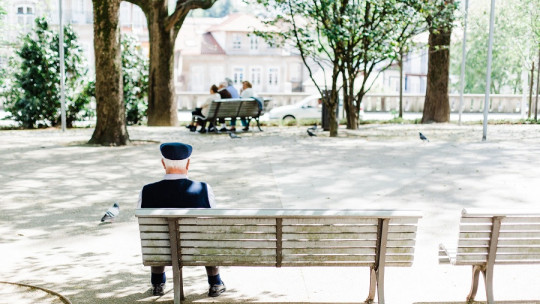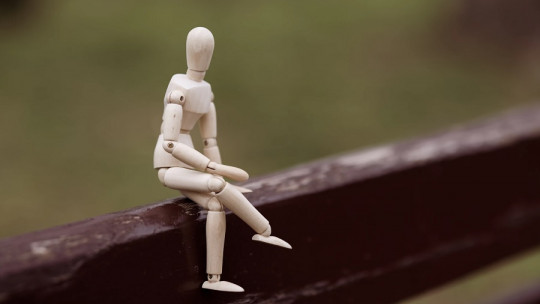
If we think about Japan, probably the first things that come to mind are its mix of tradition and avant-garde, its economic and technological power (especially with regard to robotics), samurai and geishas or even the frequent natural disasters. the ones they usually have to deal with.
Focusing more specifically on their way of life, they usually highlight the extreme level of personal and social demands of their society, their high work productivity and the search for honorability both for themselves and for their family and ancestors.
However, few people usually think about the high level of loneliness that a large part of their population has, especially when they reach retirement and old age. This fact has led to the appearance a sad phenomenon that is becoming more and more frequent: kodokushi which we are going to talk about next.
Kodokushi: a death in solitude
It is understood as kodokushi or solitary death to a phenomenon on the rise in the Japanese country, to the point of becoming a social problem
It is, as the translation of the term indicates, the process by which a large number of people die in absolute solitude in their homes, their death being unknown for a time and generally being found days or weeks later. due to the odors of decomposition.
Generally this phenomenon is observed in people between forty-five and fifty years of age, especially in the case of men.
In many cases they do not have close friendships and have not formed a family (many of them being single), or despite maintaining family ties they did not see each other frequently or on a daily basis. These are usually people who are alone in the last moments of their lives generally elderly.
However, cases have also been observed in young people who do not have the means to survive, as well as in people who suffer from a mental disability or are in a situation of dependency or in the face of serious illnesses in people who live alone and have no contact or support network. social. In some cases, not only one person dies but several who lived together, such as couples or mothers and children. In the latter we would be talking more about koritsushi
The specific causes of death vary enormously in each case, although it is common to find cases of cerebrovascular accidents, heart attacks, starvation or lack of nutrients or consequences of addictions, including cirrhosis derived from alcoholism (often used to alleviate the feeling of loneliness).
Causes of lonely death
Kodokushi or solitary death does not have a single cause, being a multi-causal phenomenon, but it is generally considered that its high prevalence is due mainly to the difficulties that can be generated by combination of such a demanding and professionally focused lifestyle, cultural factors and the progressive aging of the population.
Going into greater detail, one of its main causes and, in turn, one of its defining elements is loneliness: the high level of professional demand and the constant search for excellence mean that a large part of the Japanese population leaves aside aspects as relevant as social relationships and personal life, with a significant proportion of people remaining single (in fact, in some sectors around a quarter of the population over fifty) and with little social contact.
It is often stated that part of the blame for the situation is that they hardly have time for it, beyond the work contacts that end after retirement. In fact, despite the high level of population in a relatively small territory and the traditional vision in which the elderly live with their children and grandchildren, Japan is one of the countries considered among the loneliest on the globe
Part of the cause is also the fact that society’s demand for excellence, extremely focused on growing economically and being productive, generates high levels of stress that end up generating apathy and a lack of desire to relate and be active.
All of this also has repercussions at a demographic level: there are fewer and fewer births, so with the passage of time the population is aging.
In many cases, once retired (or in young people, after experiencing economic hardship by not finding work) people lose more and more resources, to the point that they can become very economically precarious and go hungry. In fact, one of the causes of death is starvation. In some cases they also suffer from dementia or some type of dependency as we mentioned above.
Finally, although many of these elderly people die after a period of loneliness and a state that would make them need and even depend on the help of others, loneliness, shame and the thought of not wanting to be a burden make them many do not dare to ask for help even when they need it, often pretending to be well in their last moments.
An increasingly common type of death
The first known cases of kodokushi first appeared in the 1980s, and since then the phenomenon has continued to increase over the years.
Although it may be thought that this is a phenomenon that actually occurs throughout the world (and in fact, unfortunately it is, with known cases of people who were found days or weeks after their death after neighbors had notified the presence of odors) , in Japan this phenomenon is extremely frequent: only in 2008 and In the city of Tokyo, more than two thousand people were found dead in absolute solitude
In fact, it is estimated that around 4 to 5% of funerals in Japan are linked to this type of death. And it doesn’t stop: more and more people die forgotten, without ties to the environment and without anyone noticing their absence.
It is so common that there are even companies specialized in cleaning the homes of these people, in order to eliminate both the belongings and the stains left by the effluvia of the bodies on the surfaces of the buildings (remember that many have been decomposing for weeks and even months).
The need for preventive measures in Japan
The phenomenon has reached such a level (and not only in Japan, it is becoming more and more common throughout the world), that It has become necessary to start establishing preventive measures In Japan, for example, the government collaborates with electricity and water companies to try to detect the sudden cessation of the use of said supplies that could be linked to a case.
Educational policies and the promotion of more prosocial and community values could also be helpful, as well as the search for strengthening family ties and socio-community integration through activities, devices and events.
Likewise, it is also essential tackle poverty and lack of minimum resources being a part of the deaths derived from starvation, and the creation of institutions where they can socialize and carry out activities beyond work.
Initiatives such as those seen today in some countries, in which volunteers go to homes for lonely elderly people, can also help them feel more accompanied and promote their socialization.








